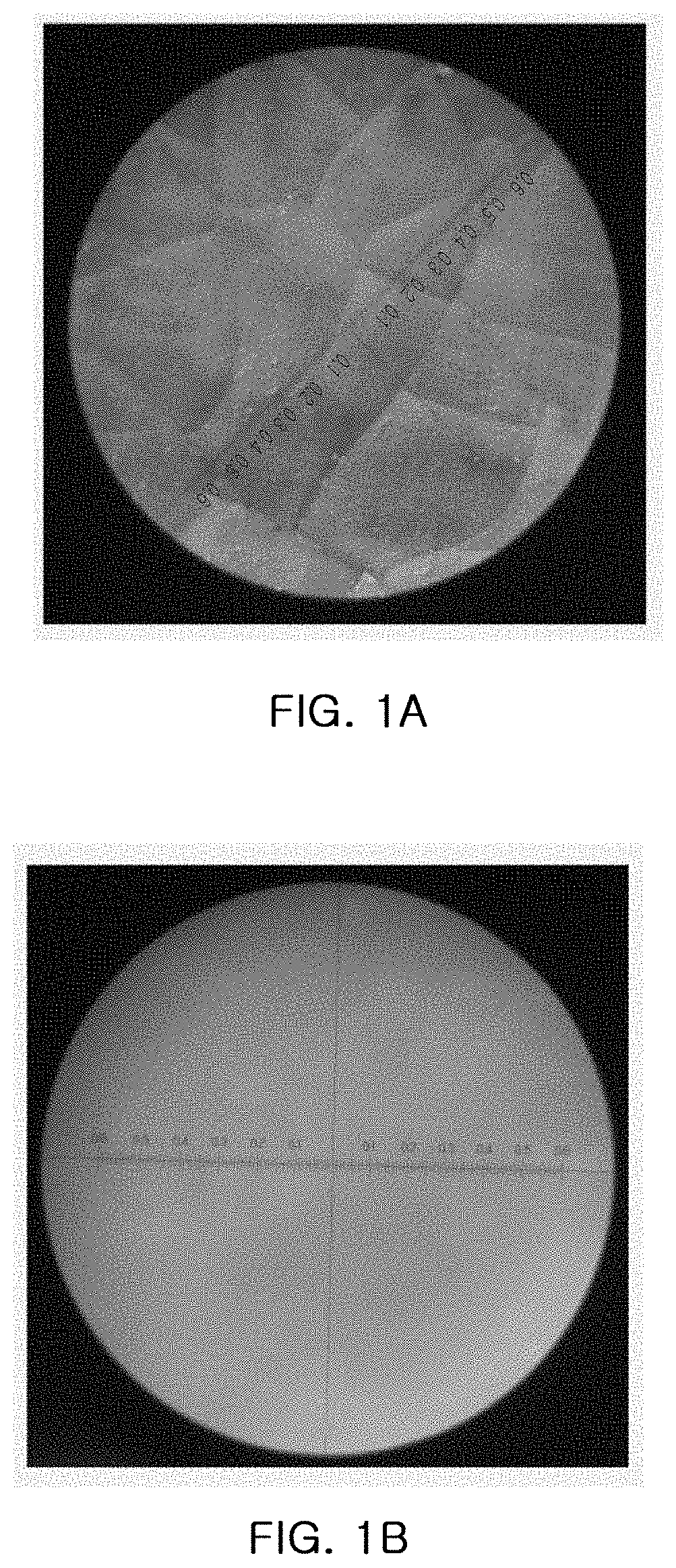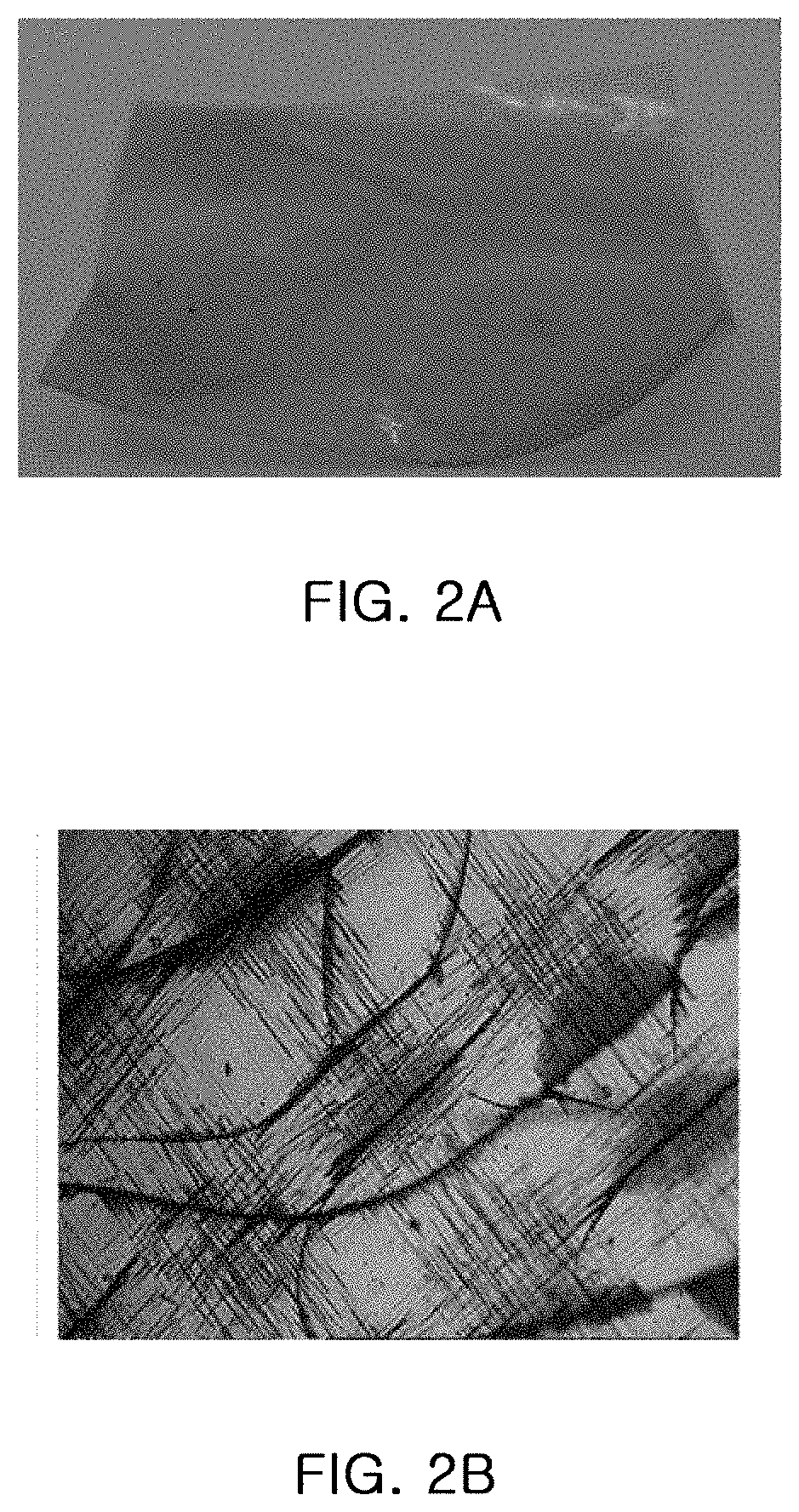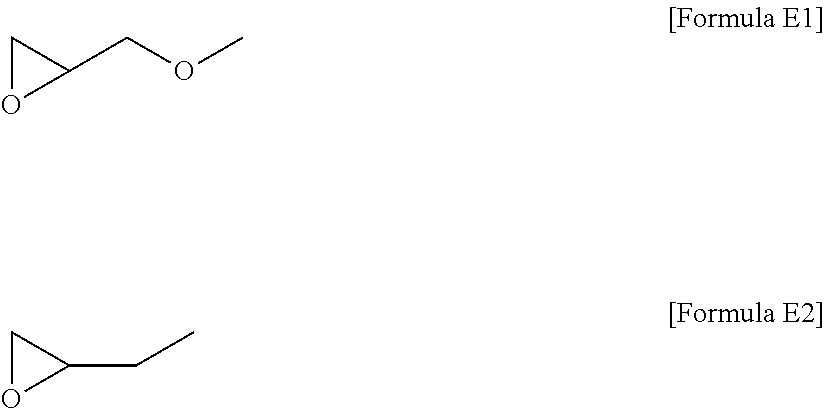Epoxy compound, mixture, composition, and cured product comprising same, method for preparing same, and use thereof
a technology of epoxy compound and cured product, which is applied in the field of epoxy compound, can solve the problems of reducing the performance and processability of components, reducing the application range of epoxy compound, and reducing the cte, so as to improve the heat resistance, reduce the cte, and increase the glass transition temperature
- Summary
- Abstract
- Description
- Claims
- Application Information
AI Technical Summary
Benefits of technology
Problems solved by technology
Method used
Image
Examples
Embodiment Construction
;
[0235]FIG. 1B is a microscope image (100× magnification) of the surface of a glass fiber composite produced using Synthesis Example 4;
[0236]FIG. 2A is an appearance of a glass fiber composite made by Comparative Synthesis Example 2; and
[0237]FIG. 2B is a microscope image (100× magnification) which shows the internal cracking of the glass fiber composite made by Comparative Synthesis Example 2
BEST MODE FOR INVENTION
[0238]The present disclosure provides a novel epoxy compound with the improved heat-resistant properties, in particular, a low coefficient of thermal expansion (CTE), and a high Tg (including Tg-less) when a composite is made by curing an epoxy composition, and / or excellent flame-retardant properties in a cured product, improved brittleness in a cured product, and / or curing reaction properties, such as viscosity increasing controllability, a method of producing the same, an epoxy composition and a cured product including the same, and a use thereof.
[0239]In the present di...
PUM
 Login to View More
Login to View More Abstract
Description
Claims
Application Information
 Login to View More
Login to View More - R&D
- Intellectual Property
- Life Sciences
- Materials
- Tech Scout
- Unparalleled Data Quality
- Higher Quality Content
- 60% Fewer Hallucinations
Browse by: Latest US Patents, China's latest patents, Technical Efficacy Thesaurus, Application Domain, Technology Topic, Popular Technical Reports.
© 2025 PatSnap. All rights reserved.Legal|Privacy policy|Modern Slavery Act Transparency Statement|Sitemap|About US| Contact US: help@patsnap.com



